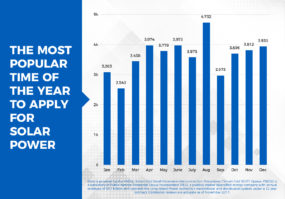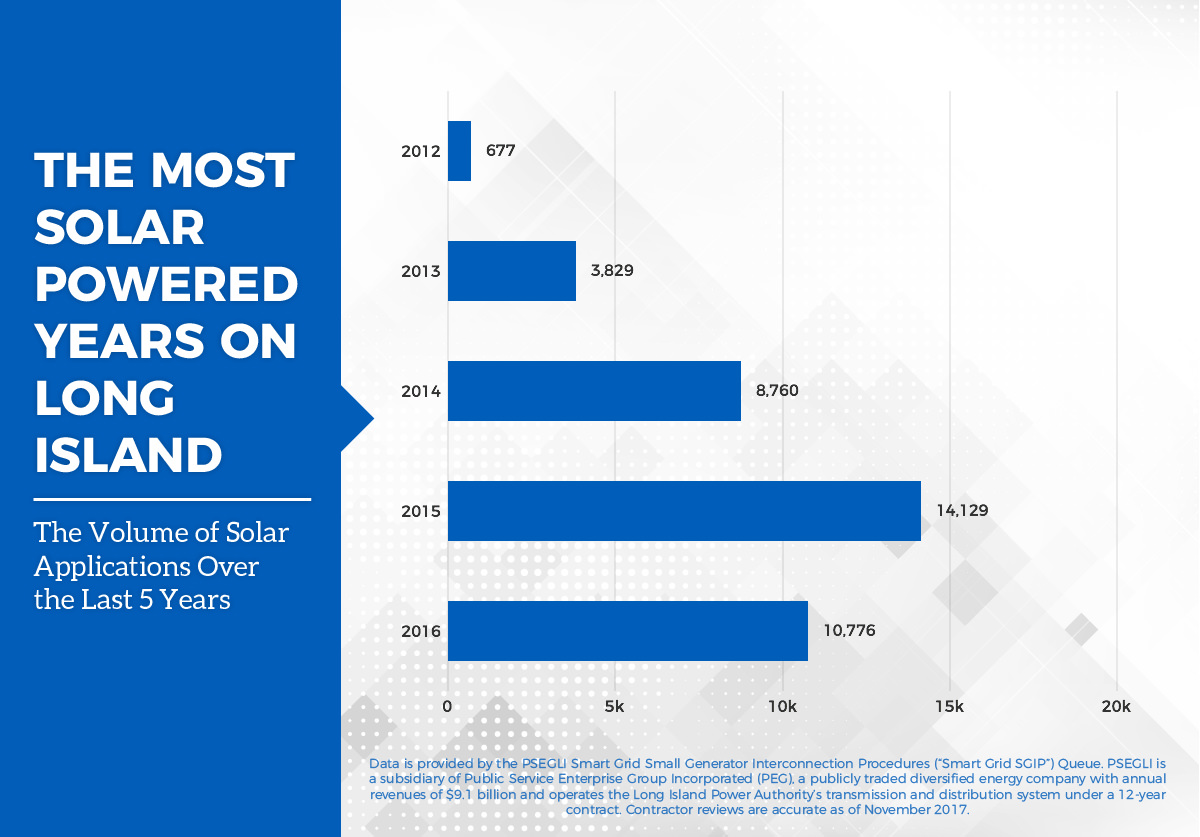Long Island leads the state in solar power, according to permit records from PSEG.
EmPower Solar marketing associate Samantha Padreddii said Long Island’s desire for solar energy in homes spiked around 2015, and the island leads the thriving New York market.
“The industry started picking up after Superstorm Sandy because of the resiliency in the area, and they wanted to build back stronger than ever,” Padreddii said. “Utility rates and the decreasing costs of the technology for the solar panels themselves also played a part in the spike.”

PSEG reports show.
(Graphic courtesy of EmPower Solar)
EmPower Solar, located in Island Park, took years worth of data from PSEG, Long Island’s main provider, and tracked the number of permits filed to get an interconnection to install and use solar panels.
The federal government offers a 30 percent tax credit for both residential and commercial installations, and the state gives a 25 percent or $5,000 credit for residential installations only. The City of New York also added a four-year tax abatement in 2008 for 5 to 8 percent of solar panel-related expenditures up to $62,500 or the building’s tax liability, whichever is less.
Padreddii said these incentives definitely played a role in the spike in applications.
“Even as these incentives start to phase out, solar is one of those technologies that’s becoming more efficient and more affordable,” Padreddii said. “We’re at the point where solar energy is cheaper than what you’d get from a utility company. Even with the phasing out of some of these incentives, it’s steadily increasing.”
Padreddii said installation costs average anywhere from $15,000 to $35,000 depending on the number and strength of panels. While the process takes about four months from the initial inquiry to the final result, Padreddii said the installation only takes a few days.
“There’s no diminishing of energy efficiency from solar energy,” Padreddii said. “Actually, what we find is that our systems often overproduce and our consumers end up selling electricity back and get a check at the end of the year for producing more than they expected.”



